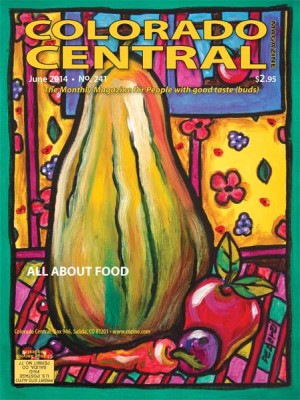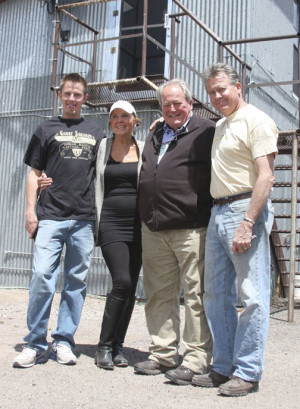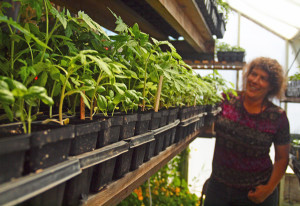by Martha Quillen
Why do we buy bad food, dubious diets and crazy cures? And why hasn’t a half-century of environmental activism done more to protect our food products?
When I was twelve, a friend was supposed to come over one Saturday, but couldn’t because her nineteen-year-old cousin had died in his sleep – and her family went to be with his family.
The cousin had, my friend told me a week later, become obsessed by the idea that there were poisons in all of our food. For a year he’d eaten nothing but farm fresh, hard-boiled eggs. Chickens, he reasoned, were small animals and couldn’t survive much poison, so freshly laid eggs should be safe – as long as you didn’t eat too many of them.
Donna’s cousin lost lots of weight and his parents, doctor and girlfriend all tried to talk him out of his monotonous diet. “But he was crazy,” Donna said.
Still, nobody expected him to die of starvation. That was more than fifty years ago, before anorexia was a household word and environmentalism was a major movement.
Rachel Carson’s Silent Spring had come out the summer before, but it was about bird populations dying, not people. It included, of course, the supposition that people could be harmed by DDT if birds could be harmed. But the idea that our society was recklessly producing and using scads of dangerous chemicals and had already contaminated everything? Trust an obsessive adolescent to make the huge leap in consciousness that everyone else would eventually make.
But the thing that struck me about the cousin’s death, and still does, is the irony of it. He could have had the worst diet imaginable – nothing whatsoever except Big Macs, A&W Root Beer and Twinkies – and lived past nineteen. He could have eaten tuna laced with mercury, vegetables contaminated by radioactive fallout, hormone-mimicking compounds from plastics, and food polluted by heavy metals for decades, just like the rest of us did, and survived long enough to get diabetes or cancer.
Donna’s cousin wasn’t entirely wrong about America’s food. Today we all know that it’s suspect. Hundreds of books, articles and studies detail the hazards.
And our food is not just contaminated, it’s designed to enhance our addictions to sugar, fat and salt. It’s bleached and stripped of nutrients; it’s colored with suspect chemicals; it contains unnecessary preservatives and additives; and it is packed in cans and cartons containing questionable ingredients that may be leaching into the food.
And it’s not merely the food that’s not good for us. By manufacturing food products in large, distant factories, we increase the steps it takes to get produce from the farmer to the consumer. This development requires additional shipping, storage and handling, which translates into additional fuel, materials and waste, and thereby not only reduces the freshness and quality of our food, it also threatens the environment.
So what do we do about it?
Apparently we eat, perhaps from the stress of continually hearing that our food and diets are substandard. And as a consequence of all our eating, we diet; or at least we read about dieting. Amazon’s diet book section contains tens of thousands of listings, featuring all sorts of diets: high-fat, low-fat, high-carb, low-carb, ketogenic, detox, vegan, clean, New Atkins, plant-based, Wheat Belly, Grain Brain, Shred, paleo and more.
We also turn to food to cure our ills. Witness all of the magazine, television and Facebook promotions touting foods with miraculous curative powers. There’s that new food (fruit, berry or melon) that eradicates pounds and wrinkles. And there are the wonder foods that reportedly prevent heart disease, cancer and Alzheimer’s and increase longevity – except they are seldom the same from year to year.
What more can we do?
Perhaps the most popular proposal to resolve both our food and fuel dilemmas is decentralization. Proponents believe we should rely more on nearby organic farms and small alternative energy facilities – powered by wind, solar, biofuel, hydro power, etc.
The idea of decentralization first became popular after the 1973 publication of E.F. Schumacher’s Small is Beautiful: A Study of Economics as if People Mattered.
However, modern food production moved in the other direction. Products that we used to grow and process ourselves started coming from China, Mexico, and other countries where labor is cheaper. This disregard for distance made it incredibly difficult to backtrack and correct problems when food proved to be contaminated or deadly.
Today, the news commonly warns us about foods (manufactured in the U.S. and abroad) that are contaminated by debris or bacteria. And we continue to create copious amounts of industrial waste, emissions and hazardous materials.
People also worry about genetically modified foods. While some people insist that GMOs are safe, others don’t believe it, and whether the information we get is pro or con, almost nobody trusts it. And for good reason.
In Food Politics, Marion Nestle explains how manufacturers, food industry spokesmen and growers game the system by constantly lobbying for changes in wording and emphasis, thereby skewering government health regulations, advertising standards and pyramid charts. Nestle presents a comprehensive picture of why USDA guidelines aren’t reliable.
I personally have no idea what you should eat. That depends on what you like; whether you’re allergic to gluten, soy, eggs, or antibiotics; and whether you worry more about pesticides, habitat destruction, animal rights or cholesterol.
But buying local can’t hurt, and it could make a substantial difference.
Most of us can’t afford to go all organic, or all local, all of the time. But we can buy local when it’s practical, and when it’s not, we can buy unprocessed foods or processed foods that come with less packaging, preservatives, colors and adulterants.
In the long run, the most important thing that we can do is to change our habits enough to send the manufacturers a message. I’m not advocating wholesale transformation, because if there is anything to be learned from all of the food and diet information available today it’s that slow, steady and sustainable changes work best.
What we need are simple, cumulative changes that can be increased over time, such as choosing foods with less sugar, salt and chemicals; growing our own gardens; buying local products; and making soups, casseroles and baked goods from scratch.
Since Donna’s cousin died, the Land and Water Conservation Fund Act, Clean Air Act, Clean Water Act, Environmental Protection Agency, and Earth Day began. Yet there are still poisons in our food. And our food industries continue to manufacture substandard, over-packaged, unhealthy products.
Why? Because if we truly want better food and a cleaner environment, we have to recognize our most obvious problem: As long as we keep buying what they’re selling, food manufacturers and farmers have very little reason to change.
Martha Quillen lives, eats and has given up vegetable gardening in Salida, but the resident deer find her trees and flowers tasty. What to do about the deer? Why not name them? Skippy, Spot, Rover, Lady and Tramp live on her block.




